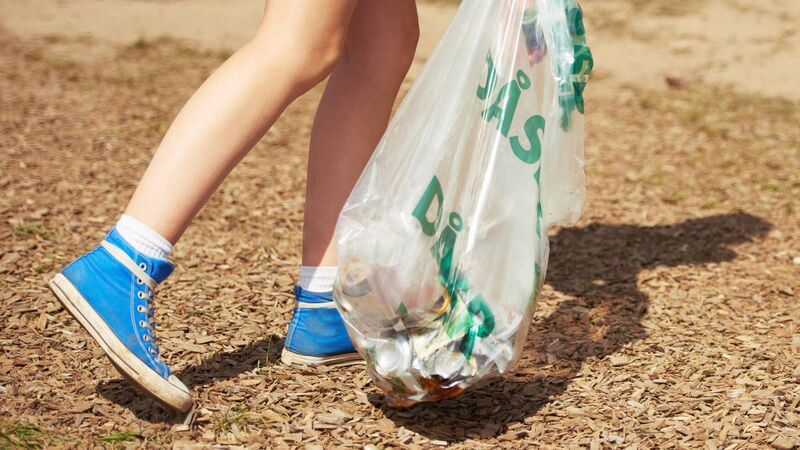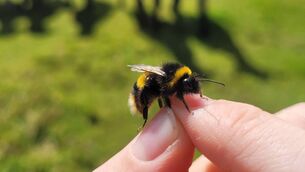The sound of sustainability: Why many concerts and festivals aren't as 'green' as they claim

Across Europe, 30–80% of tents are abandoned after festivals. In Ireland, we face similar issues
Every summer, Ireland’s fields erupt with music, dancing, and fashion choices that only make sense in a muddy field at 2am. From the electric energy of Electric Picnic to the laid-back buzz of All Together Now, festivals are the heartbeat of the Irish summer.
Globally, music festivals attract millions, but alongside the unforgettable moments, they leave a hefty environmental footprint. Waste, diesel generators, long-haul artist flights, and car-clogged access routes all contribute to a high-carbon affair.
As climate awareness grows, more festivals are touting their green credentials. But are these efforts real progress, or just a fresh coat of eco-paint?
- Festivals may be fleeting, but their impacts aren’t.
- Electric Picnic, Ireland’s largest festival, draws more than 70,000 attendees. That’s a lot of tent pegs, tinnies, and toilets.
- Coachella in the US produces more than 1,600 tonnes of waste annually but recycles just 20%.
- Across Europe, 30–80% of tents are abandoned after festivals. In Ireland, we face similar issues: fields strewn with tents, cans, and food packaging, creating a post-party wasteland.
- Globally, festivals generate around 5 kg of CO₂ per person per day, and transportation accounts for up to 80% of a festival’s carbon emissions, mainly from car travel and international flights.
In response, many festivals have rolled out sustainability measures, from plastic bans to composting, but not all green gestures carry equal weight.
Greenwashing is common in the festival world. Bold declarations of 'eco-friendly' or 'sustainable' often lack data or transparency. Tomorrowland is a good example. While it hosts sustainability panels, it largely ignores its biggest impact, transport emissions, which are 11 times greater than those from waste.
Small changes, like replacing plastic cutlery or offering vegan burgers, make headlines but barely dent emissions.
That said, some progress is worth highlighting. In 2024, Electric Picnic connected its main stage to the national electricity grid, making it the first big Irish festival to power a main stage using 100% renewable energy. That’s a solid move away from fossil fuels.
However, diesel generators are still used elsewhere on-site. To mitigate this, the festival has introduced biodiesel made from waste vegetable oil for many of its generators. Biodiesel produces fewer harmful emissions than conventional diesel, up to 60% less carbon monoxide and 50% less particulate matter, but it’s not without controversy. While biodiesel may reduce local air pollutants, its overall climate benefit is debated. Questions remain about land use, energy-intensive production processes, and the limited availability of truly waste-derived feedstocks.
Biodiesel can be a transitional tool, but it’s not a silver bullet, and relying on it risks delaying a full shift to cleaner, grid-connected or renewable sources.
Carbon offsetting, meanwhile, is sometimes presented as a magical fix. But offsets, often in the form of tree-planting or energy projects, don't erase emissions at source. They’re helpful if done correctly, but not a substitute for actual reductions.
Perhaps most worrying is the lack of transparency. Globally, only about 20% of festivals calculate and share their carbon footprint. Electric Picnic has begun assessing its emissions and setting targets under the Green Nation Charter, aiming for a 50% carbon reduction by 2030. But smaller events rarely have the resources to report detailed data. Without that transparency, it’s hard for festival-goers to distinguish real action from green spin.
- Britain's Green Gathering is fully solar-powered.
- In Spain, more than 80% of Primavera Sound’s attendees arrive by bike or public transport.
- Massive Attack’s Act 1.5 concert in 2023 became the first fully solar-powered UK festival
- Flow Festival in Finland mandates public transport and aligns with Helsinki’s 2035 climate goals.
- Even Burning Man uses gamified recycling, offering points for proper sorting, and diverts 90% of its waste from landfill.
It’s not easy being green. Festivals are temporary cities with complex logistics and tight budgets. Waste sorting is often undermined by poorly labelled bins or overworked volunteers. Across Europe, 70–80% of festival waste goes unsorted.
Still, innovation is bubbling beneath the surface. Some technologies are more about engagement than energy savings — kinetic dance floors, for instance, convert crowd movement into small amounts of electricity. Coldplay trialled them during a world tour, with each tile generating up to 35 watts during intense dancing. Over a full concert, the energy produced was enough to power a coffee machine for a few hours and not exactly grid-displacing, but symbolically powerful.
Critics argue that the actual energy contribution is negligible and may not justify the resources used to build and maintain the system. Yet, kinetic floors have value as educational tools, and they’re a fun, interactive way to raise awareness about energy use and sustainability. Like recyclable cardboard tents or solar-powered showers, they show that creativity and climate action aren’t mutually exclusive, even if the emissions savings are modest.
Festivals are more than just good craic, they’re a rite of passage. They bring people together, spark joy, and create lasting memories. But they’re also at a crossroads. Greenwashing threatens real progress, especially when core impacts like transport and energy remain untouched.
Yet signs of change are emerging. Body & Soul and Kaleidoscope are leading by example. Electric Picnic and Glastonbury show that innovation, transparency, and bold choices can cut emissions without killing the vibe.
Ultimately, sustainability at festivals is a shared responsibility. Organisers must prioritise transparency and meaningful action. But attendees also have power — by travelling greener, ditching single-use gear, and supporting festivals with genuine environmental ambition.
The music doesn’t have to stop. But to keep the beat alive, we’ll need to tune in to the planet as well as those sweet summer jams.








